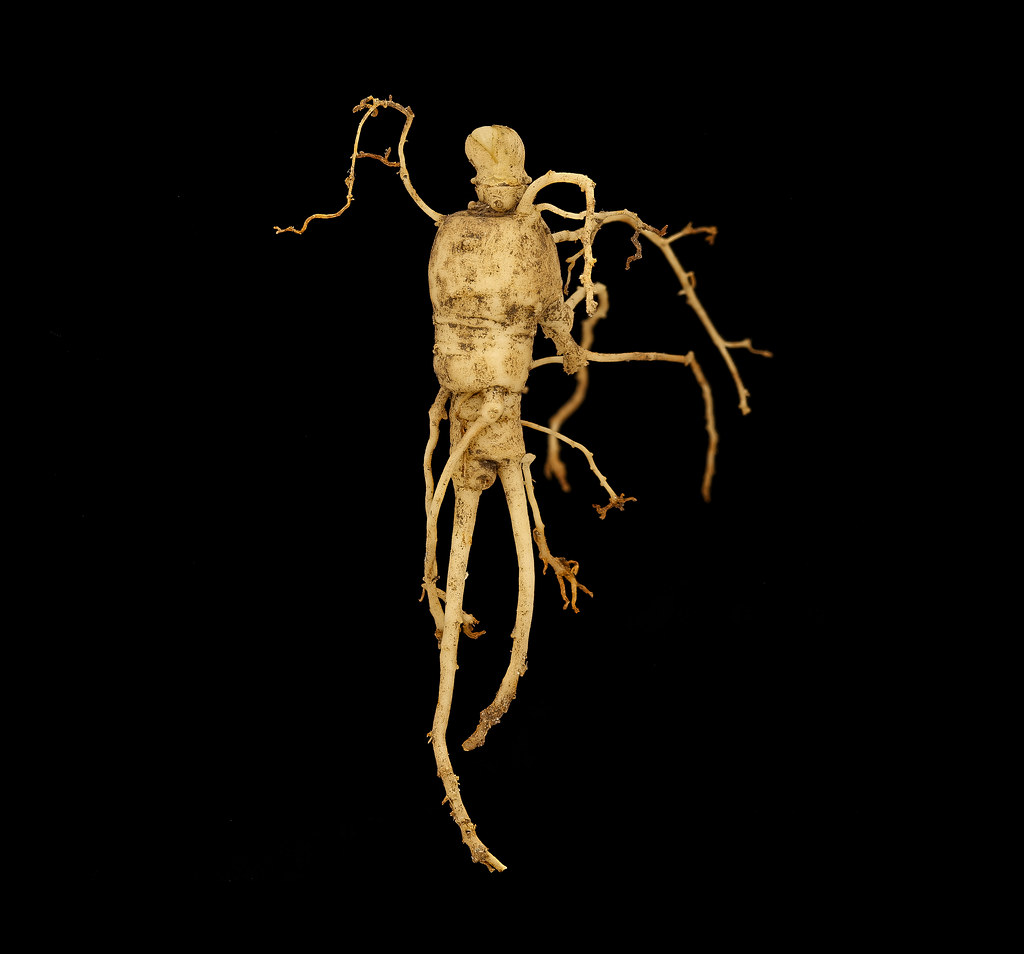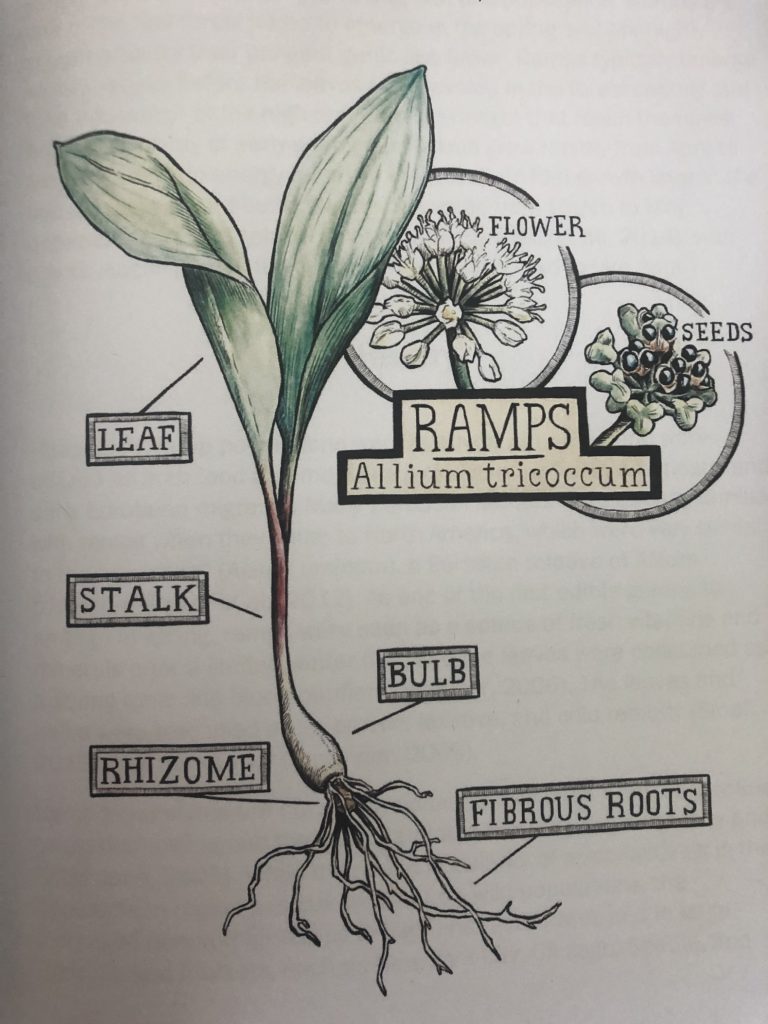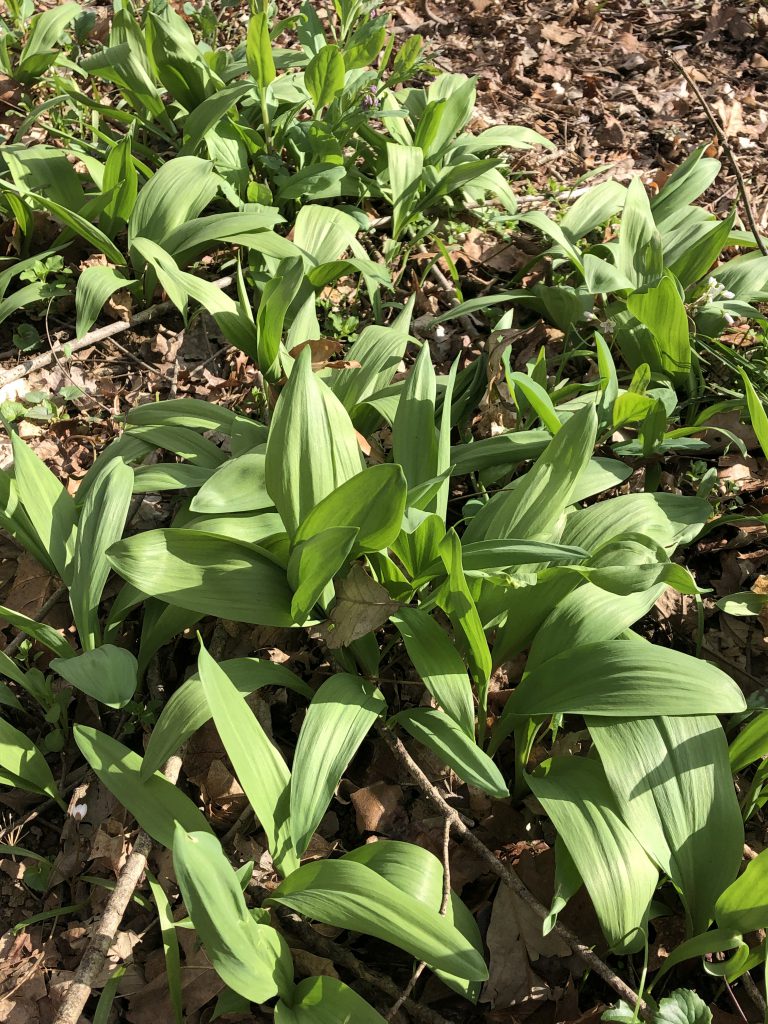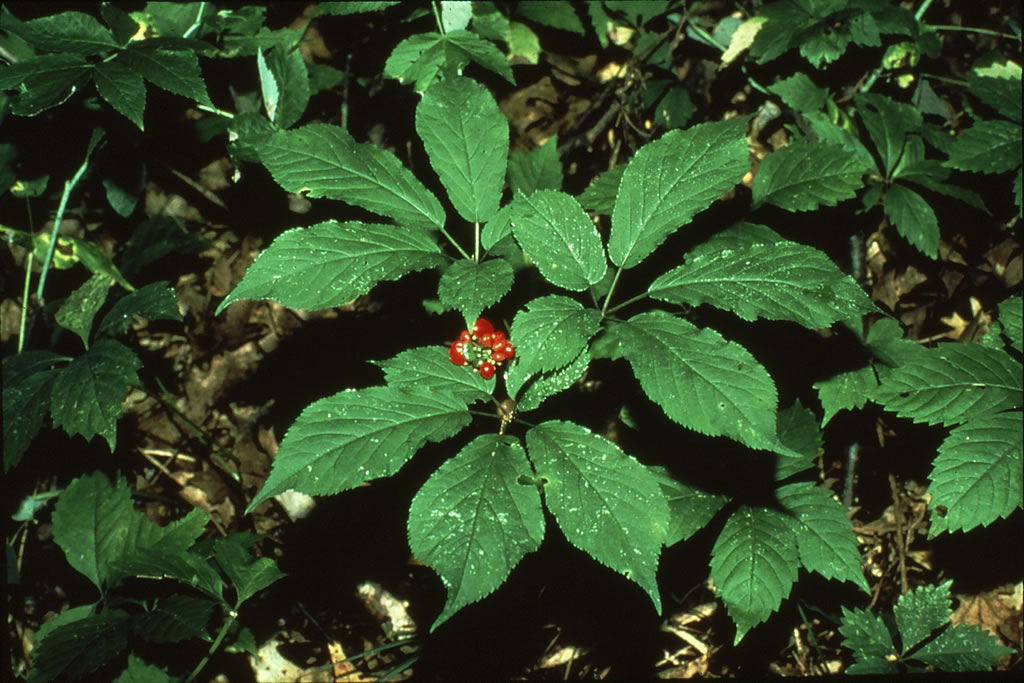
CHOICES FOR LEARNING ABOUT GINSENG:
Join our Friday zoom field trip! This Friday, Sept. 18 at 10:30am, we’ll be looking at ginseng.
Think you have plant ID skills? Play “Is it ginseng?” to practice!
Read about why this plant is so special in the rest of this blog post.
Make a mini ginseng habitat. Go outside and see if you can create a spot friendly for ginseng and its allies.
Virtual Field Trip on Zoom: Friday, Sept 18 at 10:30 am
We’ll be Zooming with you from a secret ginseng patch somewhere in Ohio. Learn how to recognize ginseng, why people want it so badly, and how to protect it. And share your own ginseng and plant stories!
Missed it? Watch the recording here:
Register for more of our fall 2020 field trips here.
Read on to learn more about ginseng and try some activities!
American Ginseng
At first glance, this plant reminds me of holly and winter holidays. Despite its red berries, this plant is not a poky, festive bush. Above is a photograph of American Ginseng, a threatened plant species that thrives here in Appalachia. But lots of plants grow in our region, sometimes so many it is hard to tell them all apart! So what makes ginseng worth talking about?
In rural Appalachia (including southeast Ohio), people have a long tradition of digging ginseng roots in the forest. Folks keep good ginseng spots secret, and teach their children how to harvest it. The root is worth a lot of money, because it is thought to have amazing medicinal properties. Because it is valuable, ginseng is constantly at risk of being overharvested, or taken too often.
Fun fact: the name “ginseng” stands for two Chinese characters that mean “man root,” because the shape of a ginseng root can resemble a person with two legs! Do you see the “man?”
A brief history of ginseng
In 1716, a priest named Father Lafitau near Montreal, Canada found a patch of ginseng while he was out working. This is sometimes considered the first discovery of ginseng in North America. However, First Nations and Native Americans were harvesting and using ginseng for centuries before Father Lafitau ever knew it existed! It wasn’t long after the Father’s discovery that ginseng from North American began to be exported to Asia.
People in China were eager to buy American ginseng. A different species of ginseng called Panax Ginseng used to grow wild in the mountains of northern China, over 5,000 years ago. But the Chinese ginseng is almost all gone because of overharvesting. So many people wanted (and still want) to buy American ginseng instead.
Ginseng grows in Appalachia and a region of China called Manchuria. Why do you think it grows in both places? How are the two environments similar? How are they different?
Ginseng in China was first used as food, then as medicine. Asian ginseng is thought to cure depression, diabetes, fatigue, inflammation, nausea, tumors, and ulcers when eaten! Older and well-formed roots of the plant were thought to be spiritual and bring good luck.
Where can we find ginseng?
So, how do you actually recognize this legendary plant? The first step in becoming a ginseng hunter is knowing where ginseng grows!
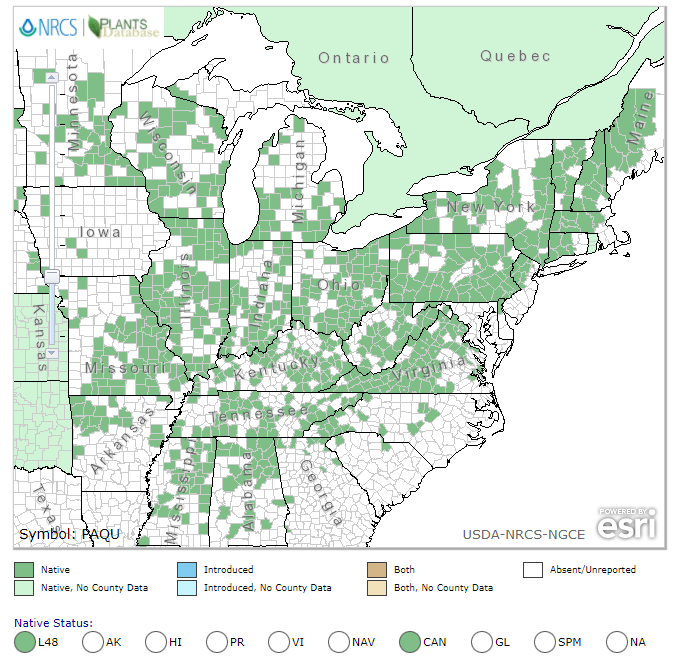
The green parts of this map show where ginseng has been found in the past. That doesn’t mean there is ginseng there right now. Sometimes ginseng disappears in places where humans have turned forests into buildings or roads, or harvested too much of it. But we know that it is possible for ginseng to grow in those places, if it has what it needs!
Let’s zoom in on Ohio, where most of us are.

At least half of Ohio is shaded in green, meaning we could find ginseng in the majority of counties in Ohio. Our home, Athens County, is ginseng territory. What about your county?
Of course, ginseng won’t grow just anywhere in our county. What types of habitat does ginseng like?
Ginseng habitat
You probably won’t find ginseng in the middle of a field or lawn. It is a secretive plant of shady forests. One Chinese legend says it jumps out of the ground and runs to a new place each night, making it harder to find!
Here is what ginseng looks for:
- Cool, shady places: Ginseng needs to be in the shade at least 65% of the time. Too much sun can burn its leaves, though it needs some sun to grow well! Hills that face north and east are usually shadier.
- Mountains and hills: Ginseng grows best on hills that are 600 to 3500 feet above sea level (about the height of the Appalachian mountains)
- Deciduous forests: A deciduous forest is made of trees whose leaves change color and drop each autumn. You won’t find ginseng in evergreen forests or tropical forests.
- Moist, well-drained soil: Ginseng does well in soil that is nice and damp, but not muddy or puddle-y. It doesn’t like dry places or clay.
- Trees like sugar maples, tuliptrees, and black walnuts: Ginseng needs lots of calcium to grow. The leaves of these trees fall to the ground and release calcium! It’s like taking a vitamin for ginseng. Have you seen these trees before?
Joe took a video of the area surrounding some ginseng he found. Take a look at the habitat. What do you notice?
What does ginseng look like?
For the first few years of its life
, a ginseng plant will look different every year! This is actually a useful way to estimate how old a ginseng plant is. The number of leaves (called prongs) on a plant tells us its age, and how big its root is.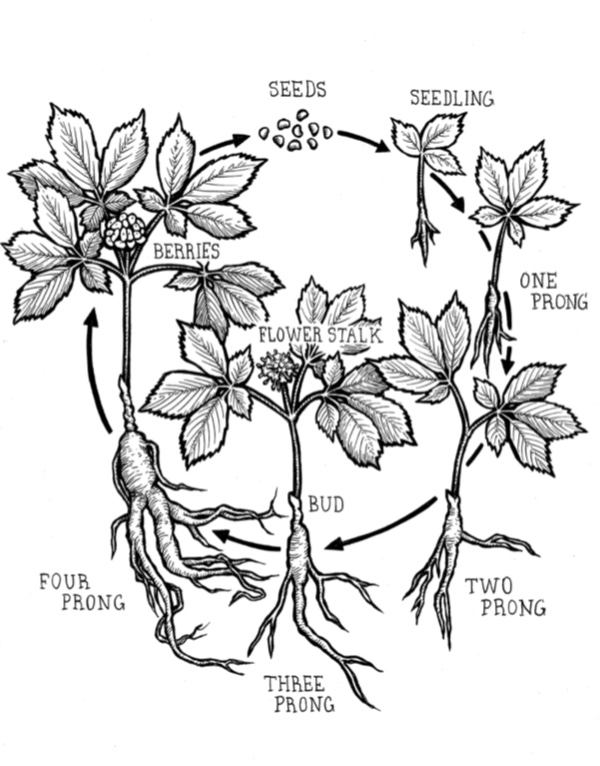
If a plant is only a year old
, it will only have one prong (one leaf made of three smaller leaflet):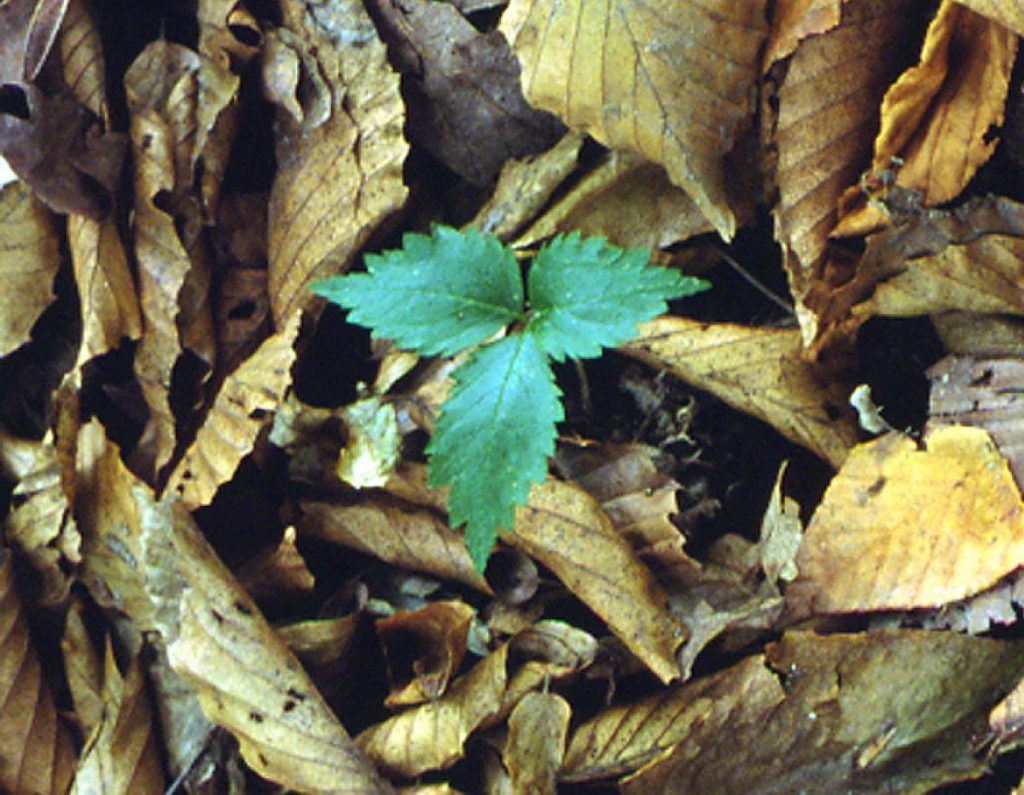
When it is two years old, it might have two prongs.
When it is four or five years old, the plant will make first berries! Berries are where ginseng seeds are. That means the plant has to grow many years before it can make any new ginseng.
When a ginseng plant has at least four prongs and a cluster of berries in the middle of the plant, it is a mature (adult) plant.
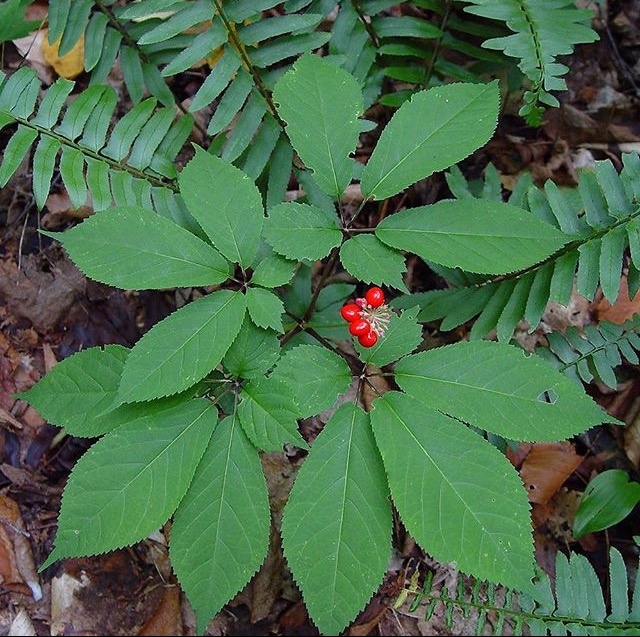
Protecting Ginseng Today
Ginseng is the most heavily traded wild plant in the United States. The root of the ginseng plant can fetch around $800 per pound, so it’s no wonder people are interested in harvesting it!
Because ginseng grows so slowly, it is easy to dig up ginseng faster than new ginseng can grow. Today, ginseng is in danger of disappearing because people harvest too much.
To protect ginseng, some places have made rules about harvesting. In the Wayne National Forest, you must buy a permit for $20 to legally harvest ginseng. This permit will allow someone to dig ginseng between September 1st and December 1st.
Rules help, but it is the people who hunt for ginseng who can do the most to take care of it. Experienced ginseng hunters will only dig plants that are at least seven to ten years old. At that age, a plant will have had a few years of making berries. Hopefully, some of these berries have sprouted into new plants to replace the old.
When responsible ginseng hunters come across a ginseng plant with berries, they plant the berries just under the leaves and top soil. They will take no more than 10% of the ginseng they find. By leaving 90% of the plants untouched, existing plants can produce more berries and increase the number of ginseng plants.
Watch this video about “wildcrafting” in Appalachia to learn more about how people here are connected to and protect ginseng:
If you come across a patch of ginseng, do a happy dance! You found a sensitive plant with cool history and value! We usually do not harvest any ginseng roots we find, because we do not need to, and we want the patch to grow stronger. Consider tasting the leaves instead of the root. If you do have a reason to dig up roots, make sure to take no more than 10% of the plants, only dig 7- to 10-year-old plants, and plant the berries.
Want to help ginseng return to the forests? Would you like to grow your own so you can easily harvest it ethically? You can buy ginseng seed from Rural Action each fall.
Have you ever harvested ginseng or know someone who has? Do you want to share a story about ginseng? Feel free to drop your story in the comments!
Fascinated by this magical plant? Here are three ways to become a ginseng genius!
- Play “Is it ginseng?” A game where we quiz you on which plants are and are not ginseng. Find it here: https://quizlet.com/525699626/learn. Click on the photos of the plants in the quiz to make them larger.
- Build your own mini ginseng habitat in your yard. Using what you learned about the shade, slope, and direction ginseng plants favor, can you create a mini environment with all the right conditions for ginseng? Use leaves, dirt, sticks, whatever you have! Show us your ginseng habitat in the comments. If you have access to a wooded area, go try to find the ideal habitat for ginseng!
- Attend the Virtual Field Trip this Friday at 10:30 AM to learn more about ginseng, share your stories and thoughts, and see some ginseng in action! Register for the meeting here: https://us02web.zoom.us/meeting/register/tZUpcu6qqTsoHNKDfYwskjOqiSjAU_4HxFma.
